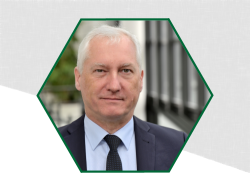The shape of the laser beam significantly influences the geometry of both the cutting front and the cutting kerf. The angle of the cutting front influences the absorptivity while the width of the kerf defines the amount of material, which has to be molten. The geometry of the kerf therefore determines the maximum possible cutting speed. These relations between absorptivity, the width of the cutting kerf, and the maximum cutting speed are described by a simple model considering the conservation of energy and rough geometrical approximations. In order to verify the prediction of the model, the geometry of the interaction zone was observed by means of online high-speed X-ray imaging. The geometry of the cutting front and kerf was recorded with a framerate of 1000 Hz during fusion cutting of 10-mm-thick samples of stainless steel. The results show an increase of absorptivity in case of an enlargement of the beam in the direction of the feed, while the cross-sectional area of the cutting kerf increases in case of an enlargement of the width of the beam in the transversal direction. Finally, these findings show a good agreement with the simpel geometric model and allows to identify optimum beam shapes for a maximum cutting speed.
Keywords
- Beam Shaping
- Laser Beam Cutting
- Maximum Cutting Speed
- Online High-Speed X-Ray Imaging

